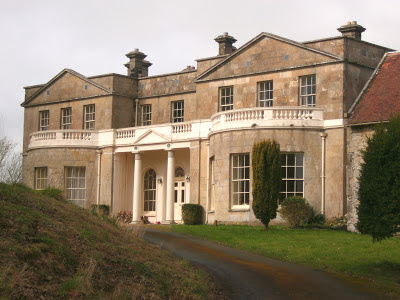Topsham, thou'rt a pretty town-—It's attributed (an attribution often cited as hard fact) to the Duke of Monmouth in the late 1600s.
I think thee very pretty,
And when I come to wear the crown
I'll make of thee a City!
However, the first print citation I can find for this rhyme is the late 19th century, and it comes with plenty of qualifications.
Monmouth had always been singularly popular in Devonshire. Five years before the death of his father he had been received in Exeter with royal honours, and more than loyal enthusiasm. Even to this day some oral traditions of his visit are preserved in the neighbourhood. He is said to have visited Topsham, the port of Exeter, and to have composed these doggerel lines, which may with more probability be attributed to some local poetaster:
<poem snipped>
- Quarter Sessions under James II, AHA Hamilton, Fraser's Magazine, August 1877, p228.And other contemporary sources take the same cautious view:
Topsham and the Duke of Monmouth.— According to Mr. A. H. A. Hamilton, in his work on Quarter Sessions from Elizabeth to Antic, Monmouth is said to have visited Topsham, the port of Exeter, and to have composed these doggerel lines:—Slightly later sources start losing the doubt element. For example, this one quotes Hamilton, removing all reference to his opinion about the origin:
<poem snipped>Mr. Hamilton hints that they " may with more probability be attributed to some local poetaster." I think so, too, but shall be glad to know if they were derived from oral tradition or from written record. Kearly.
- The Western Antiquary, Volume 6, Page 48, 1887
And:<poem snipped>Said by the Duke of Monmouth when he visited the port of Exeter. Quarter Sessions from Elizabeth to Anne, by A. H. A. Hamilton : CY. vi. 48.
- English folk-rhymes, a collection of traditional verses relating to places and persons, customs, superstitions, etc (GF Northall, pub. London, Paul, 1892, Internet Archive ID englishfolkrhyme00nortuoft)
At Topsham, near Exeter, we find a reminiscence of the ill-fated Monmouth rebellion, crushed at Sedgemoor. The Duke is recorded to have said—And:
<poem snipped>- The Gentleman's Magazine, Part 2, Page 70, 1900
[These lines] "are represented as having been probably spoken by the ill-fated Duke of Monmouth on his return from Plymouth with Charles II. in 1670 (or rather July, 1671) as they drove over Haldon on their way from Dartmouth to Exeter, and looked down on the estuary of the Exe. Even if the Duke accompanied his father on that visit, which does not seem certain, though mentioned by Jewitt in his History of Plymouth, Devon and Cornwall, may I suggest a far more probable occasion? In August, 1680, at the instigation of the Earl of Shaftesbury, the Protestant Duke set out upon a quasi-royal progress through the western counties, a district not too well affected towards the Throne ... His progress brought him to Exeter, and after spending the night with that well-known Whig, Sir Walter Yonge, at Otterton, he set out next morning for Exeter, and doubtless his route led him through Topsham, which was at that time the busy port of Exeter and at the height of its prosperity "whither the merchants convey on horses their Serges and soe load their shipps which comes to this place all for London" (Miss Cecilia Fienne's Diary). The tidings of his visit had preceded him, and a vast crowd assembled to greet him, "a brave company of stout young men, all clothed in linen waistcoats and drawers, white and harmless, having not so much as a stick in their hands," met him on the way and escorted him into the city. They ran "into toon crying 'God bless the Protestant Duke and the devil take the Pope ' " — an expression hardly in character with their spotless raiment (Hist. MSS. Rep. 12, App. 7, p. 170). This hearty reception may very well have given rise to the sentiment expressed in the lines which local tradition attributes to the Duke ; and a "Monmouth Street" and a "Monmouth Head" inn-sign still commemorate the event.This last is a very naughty conflation of irrelevant local colour and unproven assumptions: "doubtless his route led him" / "may very well have given rise to".
- Roger Granville, Devon & Cornwall Notes & Queries, Volume 6, Part 1 - Page 163, 1911
The bottom line seems to be that there are no contemporary accounts of Monmouth visiting Topsham or commenting on it, and (at least in works scanned by Google) no attribution trail to the poem prior to AHA Hamilton's 1877 account.
- Ray
































